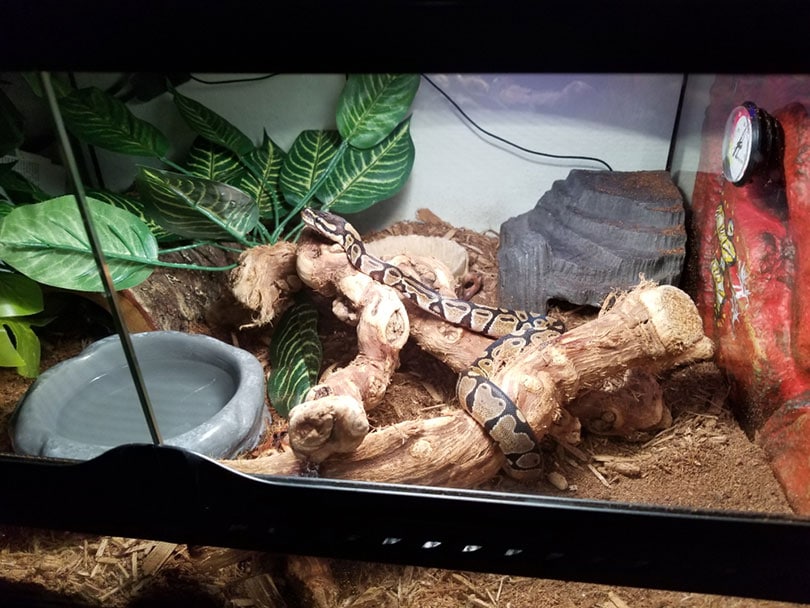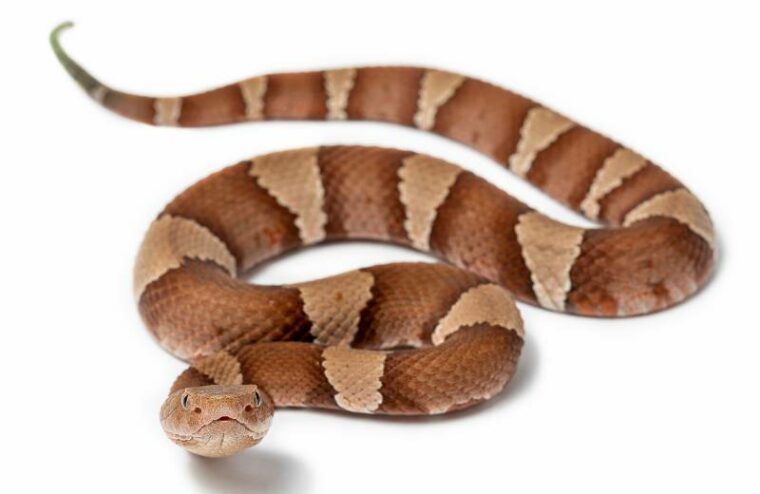
There are nearly 50 snake species in the U.S., with the copperhead being one of the most common. You are more likely to see this snake if you spend time outdoors and the weather is warm.
Copperheads are venomous pit vipers originally from North America. This reptile gets its name from its coppery color and bronze-hued head. Despite its distinctive hourglass-shaped stripes, its color and pattern aren’t unique, and there are a handful of snakes that can resemble it.
Here are nine snakes that many people mistake for copperheads, with some being injured as a result.
What Copperheads Look Like
This North American pit viper is a large snake, mostly found in the southern and eastern United States. It grows between 2 and 3 feet long, with a stout body that tends to taper toward its thin tail.
The copperhead’s main body color ranges between pink, tan (copper), and gray, though this is not common. Its belly usually has the same color as the body, though it can be a lighter shade. This snake also has crossbands at the back, which never extend down to its belly side.
You also can’t fail to notice its blunt snout, which tends to extend out from the mouth. This shape makes the head look like a triangle.
 The 9 Snakes That Look Like Copperheads
The 9 Snakes That Look Like Copperheads
1. Corn Snake
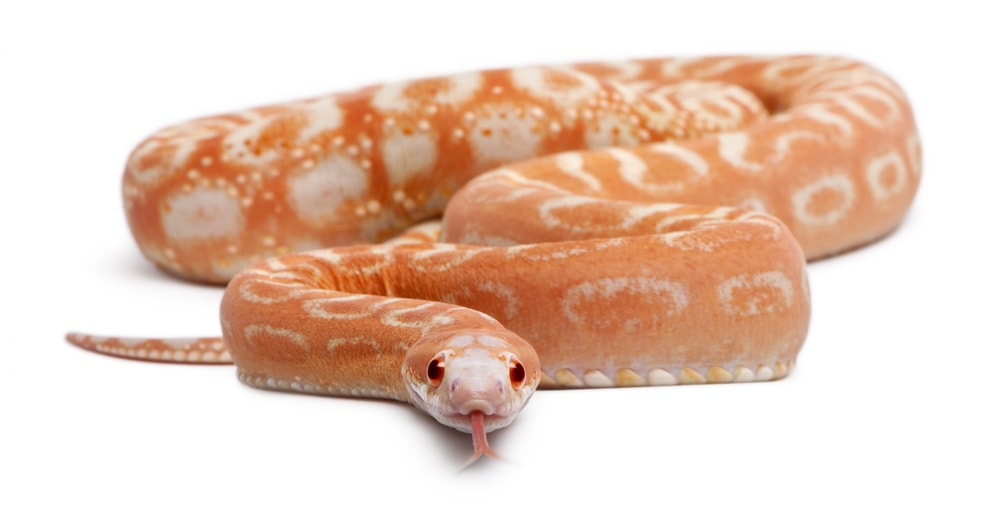
Corn snakes top the list as the most common snakes mistaken for copperheads. These snakes come in various hues, including rust-colored orange and reddish-brown. A corn snake is most often confused with a copperhead if you see it from a distance.
Corn snakes also have crossbands like those of copperheads, though the crossbands are much straighter and less hourglass-shaped. This snake’s color is the only thing that makes them look so much like a copperhead. Otherwise, they have a thinner body with an angular head.
2. Common Water Snake
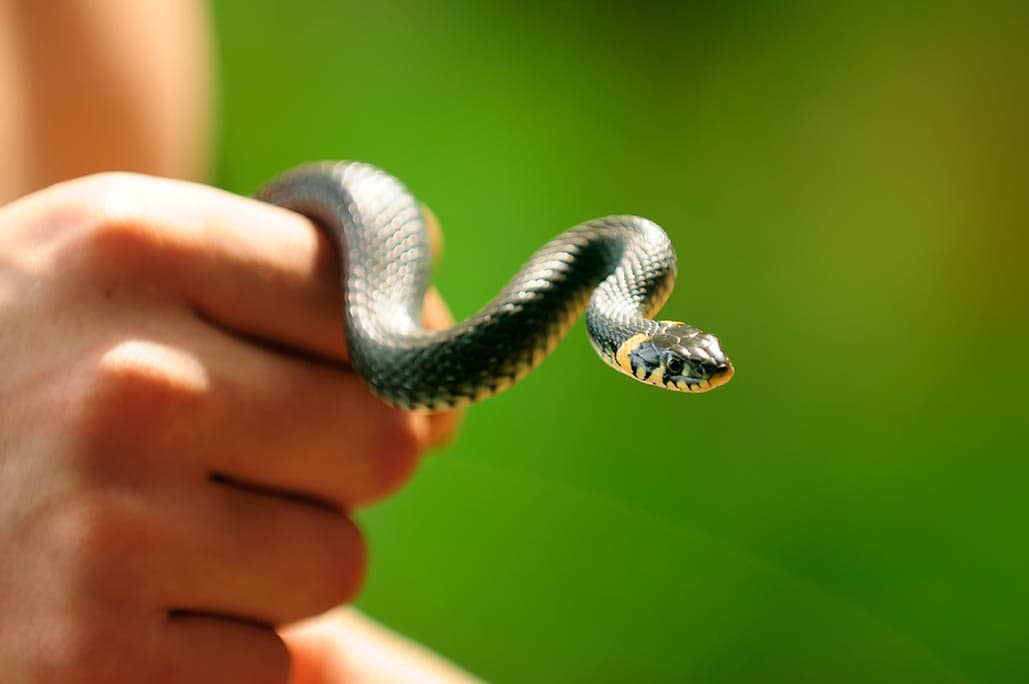
A snake that is often confused for a copperhead is the common watersnake. However, one major distinguishing factor is that water snakes tend to dwell more in the water while copperheads do not.
Also, a copperhead’s crossbands are wide in the middle and narrow at the edges, while a water snake’s crossbands are wide at the midsection and thin at the edges. Water snakes have no distinct necks and are darker in comparison to copperheads.
These snakes are also more common than copperheads, which is unfortunate because they are unnecessarily killed due to the misidentification.
3. Eastern Hognose Snake

Hognose snakes get their name from their upturned pig-like snouts. They are venomous, though it’s only enough to harm small prey animals and not humans. These snakes live in eastern North America, in the same places as copperheads. They share colors, banded patterning, and habitats, making it even more difficult to tell the two species apart.
When threatened, eastern hognose snakes puff out their necks, making their heads look more triangular. This adaptation gives them a cobra’s look and makes potential enemies leave them alone. If the disguise does not work, the hognose may roll over and play dead!
You can distinguish the hognose by its snout, head, and the fact that it isn’t spotted at the flanks like a copperhead snake.
4. Eastern Milk Snake
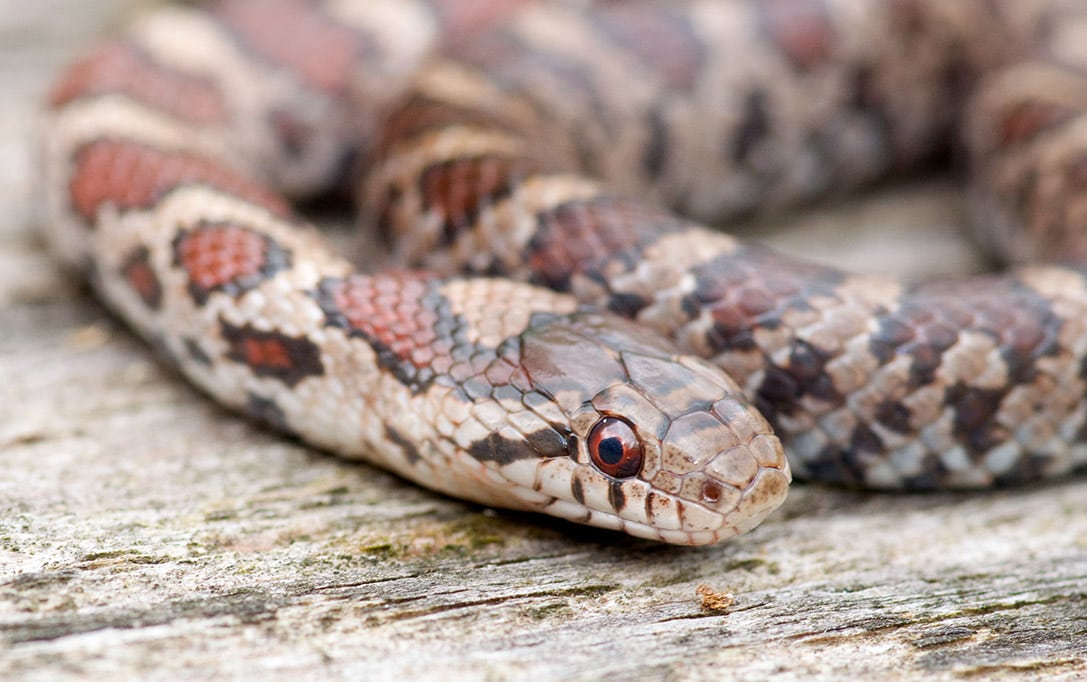
The eastern milk snake is a docile and non-venomous snake that just happens to look like the venomous copperhead. You can distinguish this snake from the latter if you look closely, though.
While the milk snake has a fairly consistent saddleback pattern, just like the copperhead, its color is bolder. The milk snake’s pattern is usually a more brilliant red, with the blotches clearly outlined in a more intense shade of black.
5. Black Racer Snake
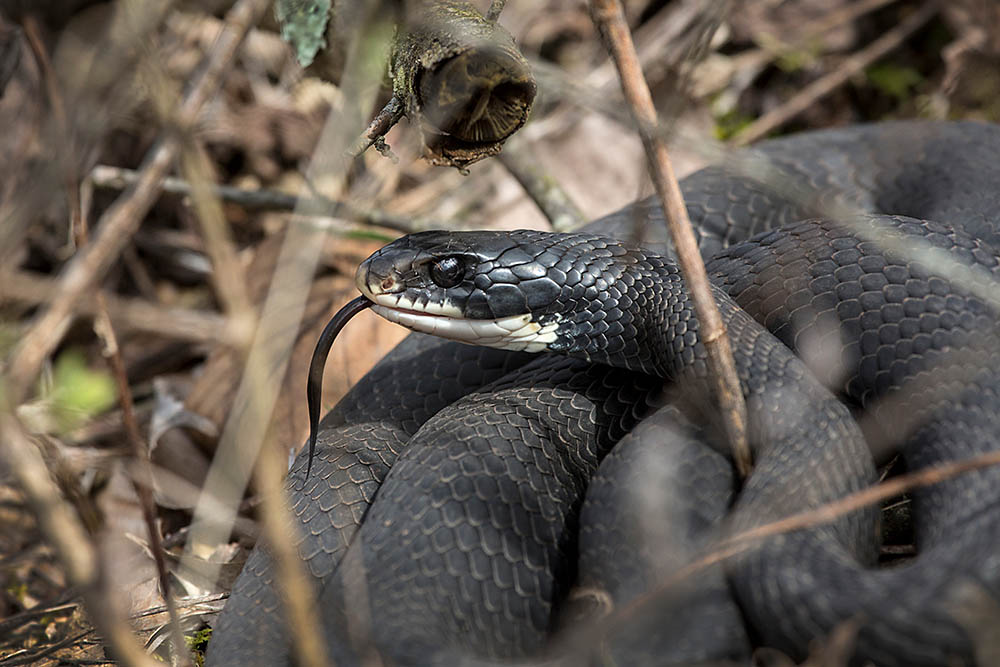
Only baby black racer snakes get confused with copperheads. Adult black racers are, indeed, black and usually patternless.
However, you can confuse a juvenile black racer’s reddish-brown crossband patterns with those of a copperhead at first glance. This feature changes as the snake grows, fading and melding into a black hue, true to its name.
Also, baby black racers are small in size, with narrow heads that are not as triangular as copperheads’.
6. Mole Kingsnake

A mole kingsnake starts life with a clear pattern that fades as it ages to a uniform brown color. However, some kingsnakes manage to keep their patterning for the long term. Mole kingsnakes are more reddish-brown than rusty brown, a color variation that distinguishes them from copperheads.
The patterned kingsnakes also have uniform small oval spots that only cover the back. In addition, they have small dark eyes and narrow heads, unlike copperheads’ large yellow eyes and triangular heads.
You are more likely to see mole kingsnakes out in the open after it has rained, unlike copperheads that like it warm. Plus, kingsnakes are arguably smaller than copperheads.
7. Diamondback Water Snake

You can guess from its name that you can find the diamondback water snake near bodies of water. These snakes love sitting on tree branches, overhanging the water to hunt for fish and any other nearby prey.
Diamondback water snakes are not venomous to humans, though. The only similar thing about diamondback water snakes and copperheads is their reticulated patterning.
8. Black Rat Snake

A common snake misidentified as a copperhead is the juvenile black rat snake, also known as the eastern rat snake. It usually has a distinct pattern of brown or grey blotches after birth. However, the patterns fade and meld into black as the snake ages, only keeping its juvenile patterning.
Eastern rat snakes look for warm habitats during winter, preferably a human’s attic, basement, or any other crawlspace. Copperheads do not seek shelter in human establishments during winter.
9. Banded Water Snake
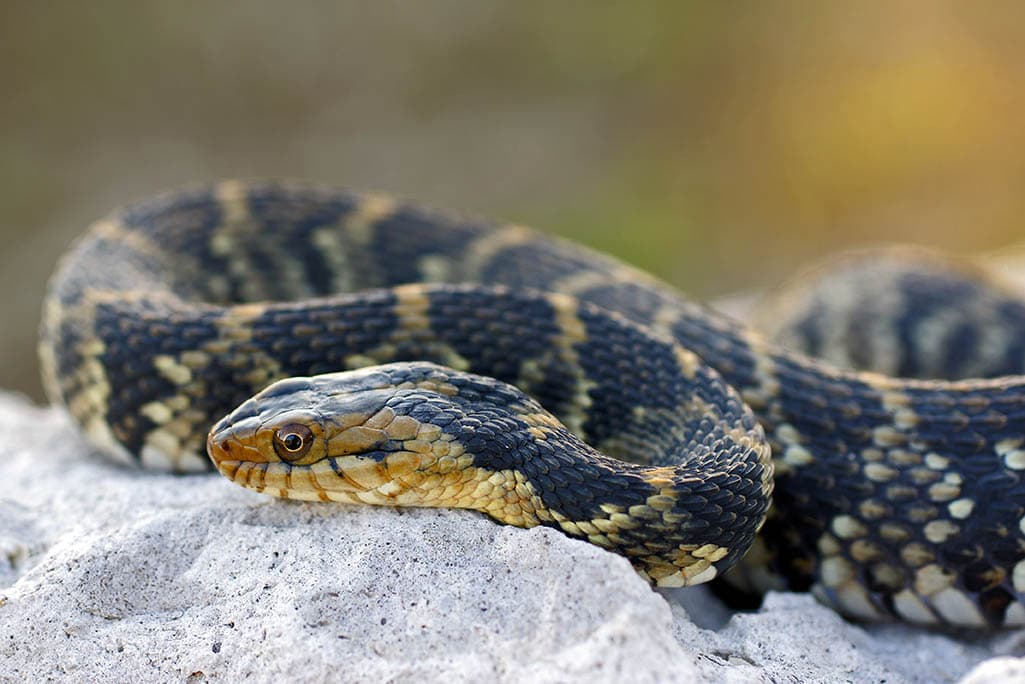
This harmless water snake looks like the venomous copperhead. The banded water snake’s color is similar to that of a copperhead, including the red, brownish, and orange hues. The species also share skin patterns that confuse most people who come across them.
 Final Thoughts
Final Thoughts
It’s quite common for different types of snakes to resemble each other. Although snake species vary genetically, these reptiles sometimes employ evolutionary tactics for survival. For example, many non-venomous snakes use mimicry to look like venomous snakes, a defensive tactic that helps keep predators away.
So, the next time that you spot a snake that looks like a copperhead, be aware that you could be looking at a perfectly harmless imitator.
Featured Image Credit: Scott Delony, Shutterstock

 The 9 Snakes That Look Like Copperheads
The 9 Snakes That Look Like Copperheads

